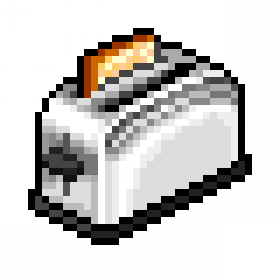 DDEV is the official local development tool of Drupal. And like Drupal, DDEV depends on the support of the open source community.
DDEV is the official local development tool of Drupal. And like Drupal, DDEV depends on the support of the open source community.Workbench provides site contributors a way to easily create and find their own content.
Drupal provides a great framework for building functionality. Workbench helps harness content-focused features in one unified user interface. The goal is that a user does not need to learn Drupal in order to add content to the site.
Users need access to their account, their content, and to add new content. Instead of having to know how to navigate to My Account (/user/[uid]), Add content (node/add), and Find Content (admin/content), the user goes to My Workbench instead.
Simple changes like this help ease the learning curve for new users.
Drupal 9
The Drupal 9 release (8.x-1.2) is now stable and supported.
Upgrading to 8.x-1.3
The 8.x-1.3 release corrects an error in the way revisions were tracked. Updating the view in code is not feasible, so the easiest way to update is as follows:
- Delete the existing View "Workbench: Edits by user" (`workbench_edited`)
- Re-import the View configuration using the Configuration Import screen or by disabling and re-enabling the Workbench module.
Using the module
As an Administrator or a user with Access My Workbench permissions, you will see My Workbench in the toolbar to the right of the Home icon.
The default page is the My Content page. On the My Content tab, you can see three areas:
- Your Profile
- Your most recent edits
- Recent content
This is your content dashboard. As soon as you Add or edit content, it will be displayed in the Your most recent edits block.
Developer notes
Workbench core is a series of Views. For current sites, we recommend creating custom Views for editors or modifying existing Views using the tools provided.
Administrators also have access to the configuration tab and page.
By default, the module ships with 4 main pages and 3 Views. You can configure which page elements are displayed at /admin/config/workflow/workbench.
The admin page lets you assign Views to the 5 fundamental areas of Workbench.
Note that the Create content tab is not a View and is not configurable.
Updates from earlier releases
Release notes for 8.x-1.0-beta1 are important to current users. Major changes have been introduced.
Drupal 7
The Workbench suite of modules provides overall improvements for managing content that Drupal does not provide out of the box. Workbench gives us three important solutions:
- A unified and simplified user interface for users who ONLY have to work with content. This decreases training and support time.
- The ability to control who has access to edit any content based on an organization's structure not the web site structure
- a customizable editorial workflow that integrates with the access control feature described above or works independently on its own
These features benefit the end users as well as Drupal Site Administrators and Technical Support.
Related Modules
- Workbench Access
- Content Moderation in Drupal core.
Workbench Modules
Workbench is separated into several modules. Workbench module is required by all of the other modules, and each module can function independently of the others except where noted. You need to download and install all of the modules to make use of all of the Workbench features.
- Workbench Access
- Workbench Access provide the hierarchical permissions across "Sections" of your web site. You can use menus, taxonomy, or create your own hierarchical structure for controlling access to a piece of content.
- Content Moderation (was Workbench Moderation in Drupal 7)
- To provide editorial workflow, you want to install core's Content Moderation module. It is a flexible system which provides default workflow states like Drafts, Needs Review, and Published. You can also change these states to suit your organizations needs.
Each module comes with an extensive README.txt file. Be sure to read through them to learn all of the details.
More Details
Workbench is a suite of modules which provide easier content management for content administrators. Each of the "Workbench" modules has been tested to work with the main Workbench module, and with the other modules in the Workbench suite. The Workbench suite is modular, allowing site builders to build the workflow that best suits the content administrators on their site.
The Workbench suite provides authors, editors, and publishers with a unified interface for managing content relevant to them. It allows people to focus on content, rather than on learning Drupal.
Workbench incorporates contributed modules and has some new features of its own:
- Hierarchical permission inheritance by “Sections” not just content types
- Extensible workflow states
- Single repository for media management
- Modify live content without publishing changes immediately
Additional resources
- Watch a screencast on an introduction to Workbench.
- Learn more about how Workbench got started.
- Screencast series on the Workbench suite
- Workbench Overview Pt. 1 - My Workbench and Media
- Workbench Overview Pt. 2 - Moderation
- Workbench Overview Pt. 3 - Access
Version numbers
The modules in the Workbench suite may not have the same version numbers. However, the latest recommended release of each module is always tested in conjunction with the other modules in the suite.
Sponsors
Development is sponsored by Palantir.net.
Project information
- Project categories: Content editing experience
22,034 sites report using this module
- Created by johnalbin on , updated
Stable releases for this project are covered by the security advisory policy.
Look for the shield icon below.
Releases
Development version: 8.x-1.x-dev updated 22 Aug 2025 at 15:58 UTC




